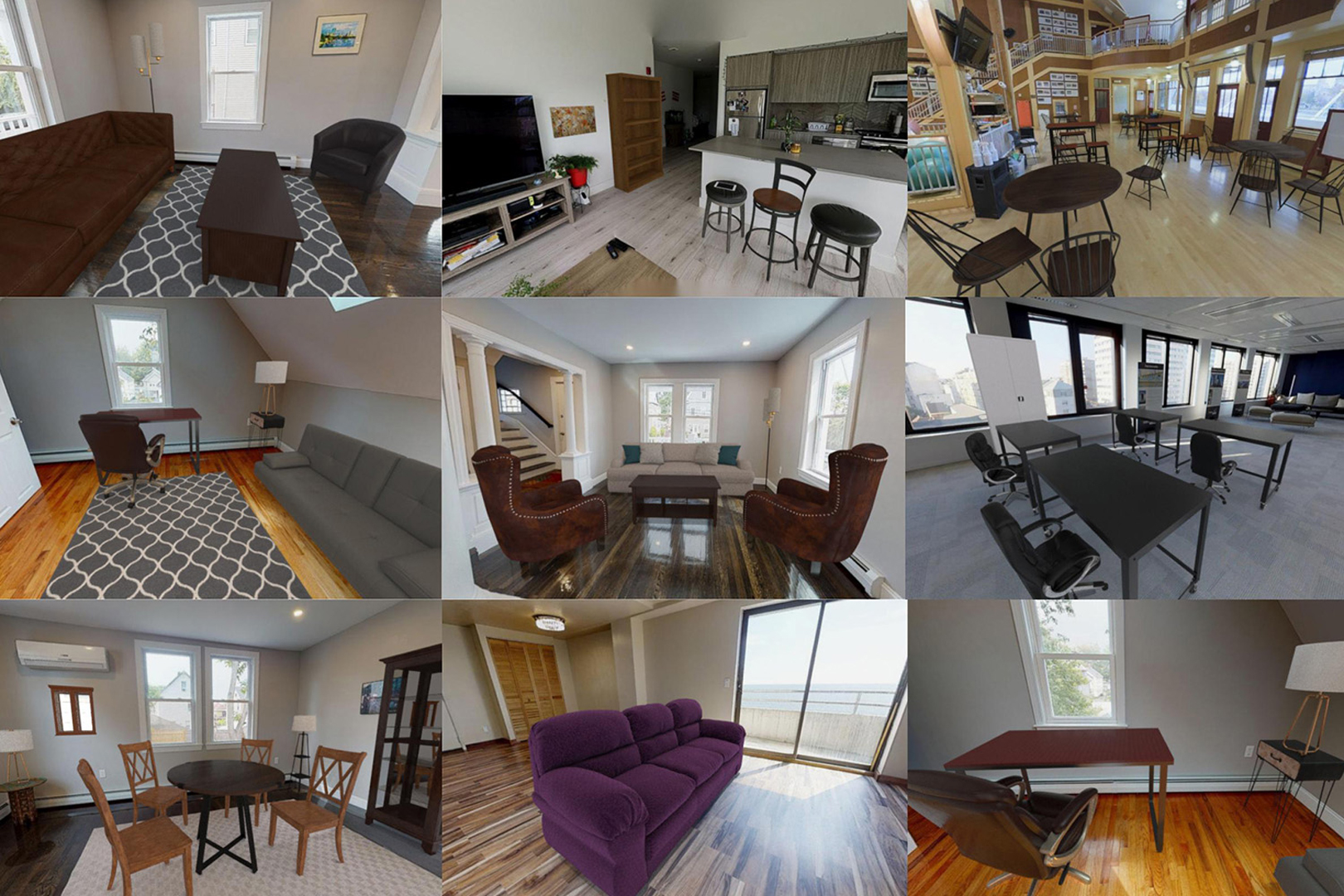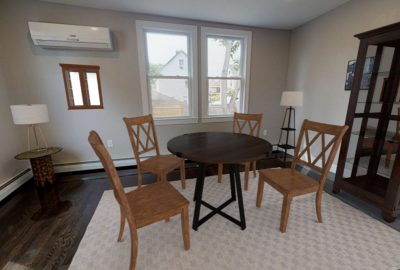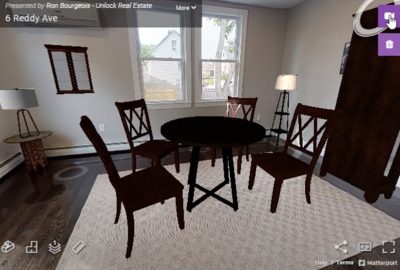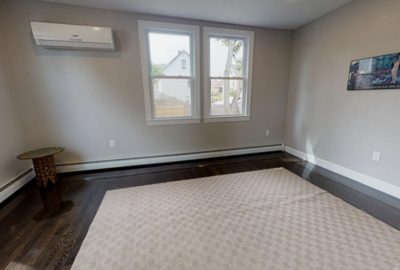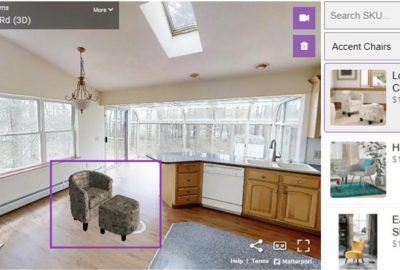“Home Studio: DIY Interior Design in Mixed Reality” by Vazquez, Tan and Sadalgi
Conference:
Experience Type(s):
Entry Number: 08
Title:
- Home Studio: DIY Interior Design in Mixed Reality
Program Title:
- Immersive Interaction - New Modalities
Presenter(s):
Description:
Virtual staging of real estate listings increases the appeal of a property by letting prospective buyers envision a living space remotely. However, existing tools employed to stage homes limit the scale of the visualization to a set of fixed images provided by customers or require 3D artist expertise to reconstruct the space. The adoption of 3D Matterport scans has accelerated due to the Covid-19 pandemic as a means to enable virtual tours and adhere to social distancing guidelines. We present Home Studio, a virtual staging tool that empowers non-experts, letting them furnish any Matterport scene and create photo-realistic renders in a matter of minutes. Our tool lets customers dive into their designs using a virtual reality headset to assess the final product in an immersive experience.
References:
- Adobe. 2021. Adobe Dimension. https://www.adobe.com/products/dimension.html. (Accessed on 09/15/2020).
- Alain Fournier, Atjeng?S Gunawan, and Chris Romanzin. 1993. Common illumination between real and computer generated scenes. In Graphics Interface. Canadian Information Processing Society, 254?254.
- Marc-Andr? Gardner, Yannick Hold-Geoffroy, Kalyan Sunkavalli, Christian Gagn?, and Jean-Fran?ois Lalonde. 2019. Deep parametric indoor lighting estimation. In Proceedings of the IEEE International Conference on Computer Vision. 7175?7183.
- Peter K?n and Hannes Kafumann. 2019. DeepLight: Light Source Estimation for Augmented Reality Using Deep Learning. Vis. Comput. 35, 6?8 (June 2019), 873?883. https://doi.org/10.1007/s00371-019-01666-x
- Kevin Karsch, Kalyan Sunkavalli, Sunil Hadap, Nathan Carr, Hailin Jin, Rafael Fonte, Michael Sittig, and David Forsyth. 2014. Automatic Scene Inference for 3D Object Compositing. ACM Trans. Graph. 33, 3, Article 32 (June 2014), 15?pages. https://doi.org/10.1145/2602146
- Matterport. 2021. Matterport: 3D Capture Applications. https://matterport.com/3d-capture-applications/. (Accessed on 02/05/2021).
- Vanessa McGrady. 2015. 7 Pro Tips To Help Your Home Sell Faster, For More Money. https://www.forbes.com/sites/vanessamcgrady/2015/11/04/staging/?sh=416f38af50c9. (Accessed on 01/06/2021).
- Modsy. 2021. Online Interior Design with Modsy | Living Rooms, Dining Rooms, Bedrooms & More!https://www.modsy.com/. (Accessed on 09/15/2020).
- Jinwoo Park, Sung Sil?Kim, Hyerim Park, and Woontack Woo. 2016. ?DreamHouse?: NUI-Based Photo-Realistic AR Authoring System for Interior Design. In Proceedings of the 7th Augmented Human International Conference 2016 (Geneva, Switzerland) (AH ?16). Association for Computing Machinery, New York, NY, USA, Article 14, 7?pages. https://doi.org/10.1145/2875194.2875221
- Andreas Pomi. 2005. Interactive mixed reality rendering in a distributed ray tracing framework.
- Francisco Ramos, Oscar Ripolles, and Miguel Chover. 2014. Efficient visualization of 3D models on hardware-limited portable devices. Multimedia tools and applications 73, 2 (2014), 961?976.
- Rooomy. 2021. Rooomy. https://rooomy.com/. (Accessed on 09/15/2020).
- Space10. 2017. IKEA Place: Bridging the Imagination Gap With AR | SPACE10. https://space10.com/project/ikea-place/. (Accessed on 09/15/2020).
- Ya-Ting Yue, Yong-Liang Yang, Gang Ren, and Wenping Wang. 2017. SceneCtrl: Mixed Reality Enhancement via Efficient Scene Editing. In Proceedings of the 30th Annual ACM Symposium on User Interface Software and Technology (Qu?bec City, QC, Canada) (UIST ?17). Association for Computing Machinery, New York, NY, USA, 427?436. https://doi.org/10.1145/3126594.3126601
Additional Images:
- 2021 Immersive Pavilion: Vazquez_Home Studio: DIY Interior Design in Mixed Reality
- 2021 Immersive Pavilion: Vazquez_Home Studio: DIY Interior Design in Mixed Reality
- 2021 Immersive Pavilion: Vazquez_Home Studio: DIY Interior Design in Mixed Reality
- 2021 Immersive Pavilion: Vazquez_Home Studio: DIY Interior Design in Mixed Reality

